Shortcat - An app that makes it easy to use your Mac without a mouse
Your Mac's trackpad or mouse lets you navigate your computer.
Install and customize Shortcat
Shortcat is a free Mac app that indexes clickable UI elements on the screen and assigns keyboard shortcuts or lets you search for them, making navigating your Mac just a few keystrokes away. You can use Shortcat to scroll, click buttons, open compatible applications, browse the web, etc. without a trackpad or mouse. So whether the mouse doesn't work on your Mac or you prefer to keep your hands on the keyboard, Shortcat is a great app to try.
Here's how to install and customize Shortcat after downloading it using the link above:
- Double-click the downloaded Shortcat file and click Open on the pop-up window.
- You will see a welcome window prompting you to grant permissions to the app. Click the Request Permission and Open System Settings button on the next page. Turn on the switch next to Shortcat.
- Click Next on the next page that opens to confirm that permission has been granted.
- You can set Shortcat's keyboard activation shortcut on the next window or click Next if you're happy with the default Cmd + Shift + Space .
- The next window displays a quick tutorial on how to use Shortcat. Click Next > Open Preferences to customize Shortcat to your liking.
- When finished, click Finish Tutorial .

Once installed, you can return to the preferences menu at any time by clicking the Shortcat icon in the menu bar and selecting Preferences .
Use Shortcat to search and select elements on the screen
Shortcat provides several ways to search for clickable on-screen elements without taking your hands off the keyboard. You can activate Shortcat using the selected keyboard shortcut or the default Cmd + Shift + Space . Here are some ways to use Shortcat to interact with elements on the screen:
Search and select using letter hints
One of the fastest ways to search for elements on the screen using Shortcat is to select the two-letter suggestions that appear in the yellow boxes above them. After activating Shortcat using the keyboard shortcut Cmd + Shift + Space , you will see yellow boxes appear, each containing one or two letters.
Enter the letters corresponding to the element you want to select and press Return (or Enter ). For example, to go to Notification settings (in the screenshot below), type AJ to highlight the item and press Return .
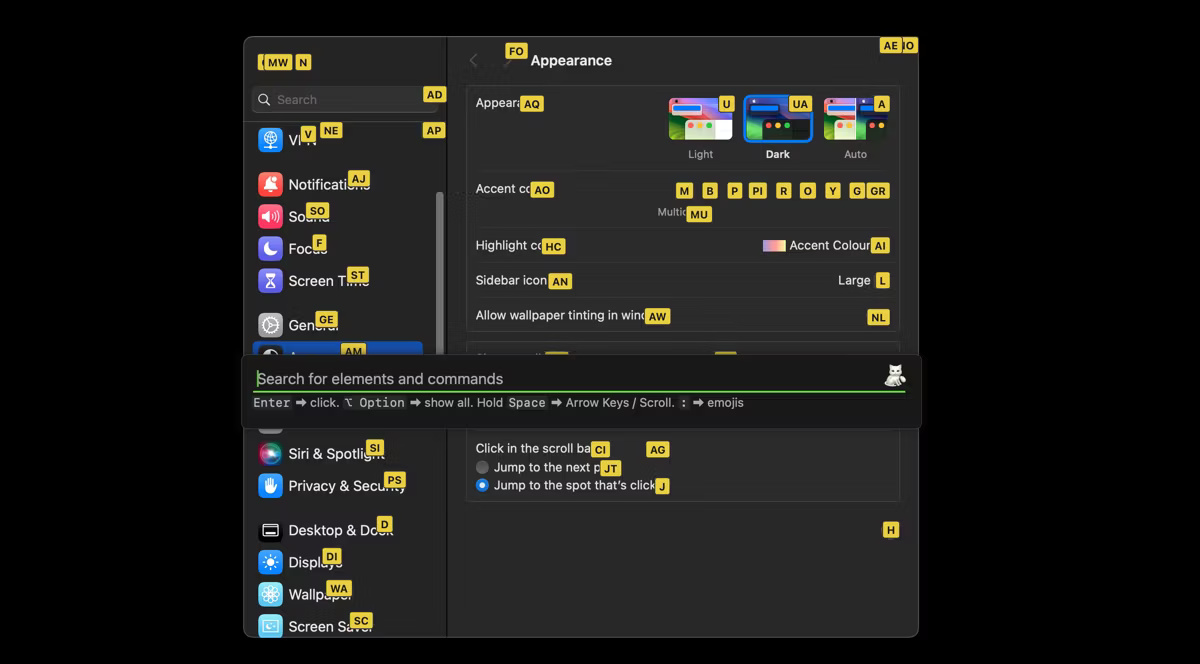
Search by entering the component name
Another quick way to interact with elements on the screen is to enter the element name in the Shorcat search box. For example, enter Notification in Shortcat's search bar and press Return . This works best when you know what you're looking for.
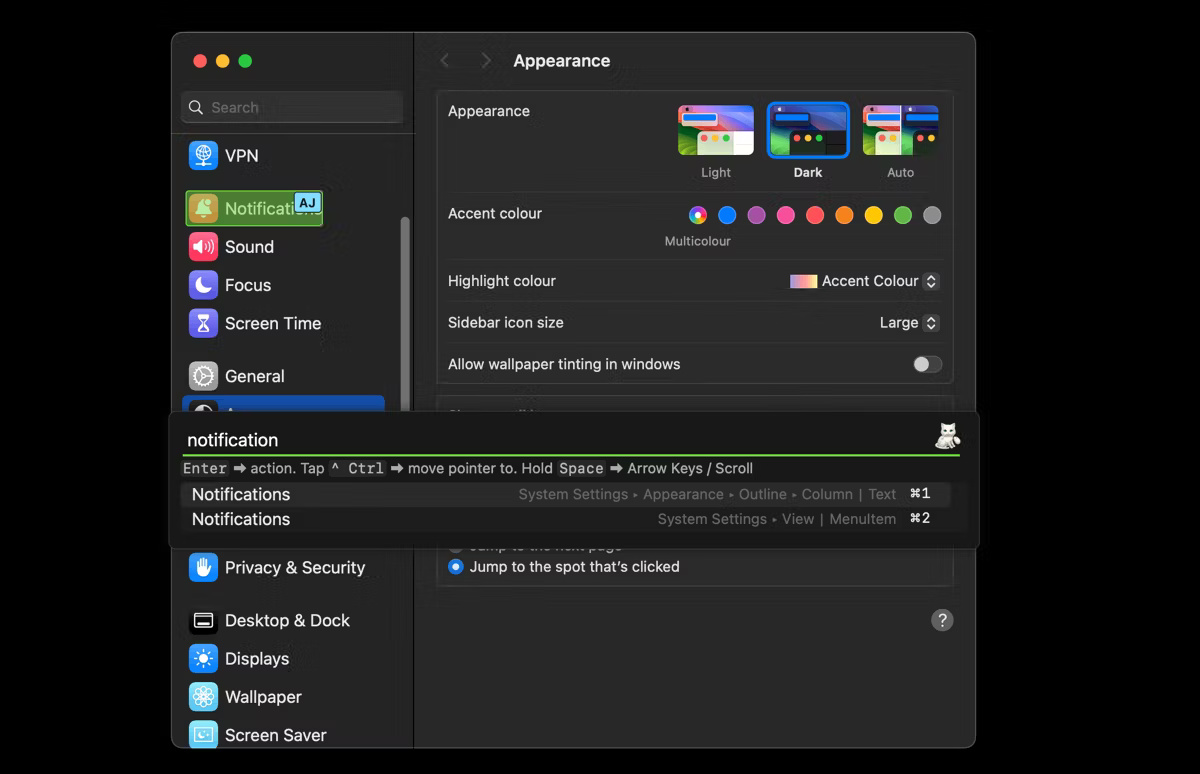
Filter by element type
Sometimes you may want to narrow your search by specifying the type of element you're looking for. For example, if you just want to select a link on your screen, you can enter Link in Shortcat's search bar. This will filter out any other elements and display only links on the screen, which you can select using the two-letter hint.
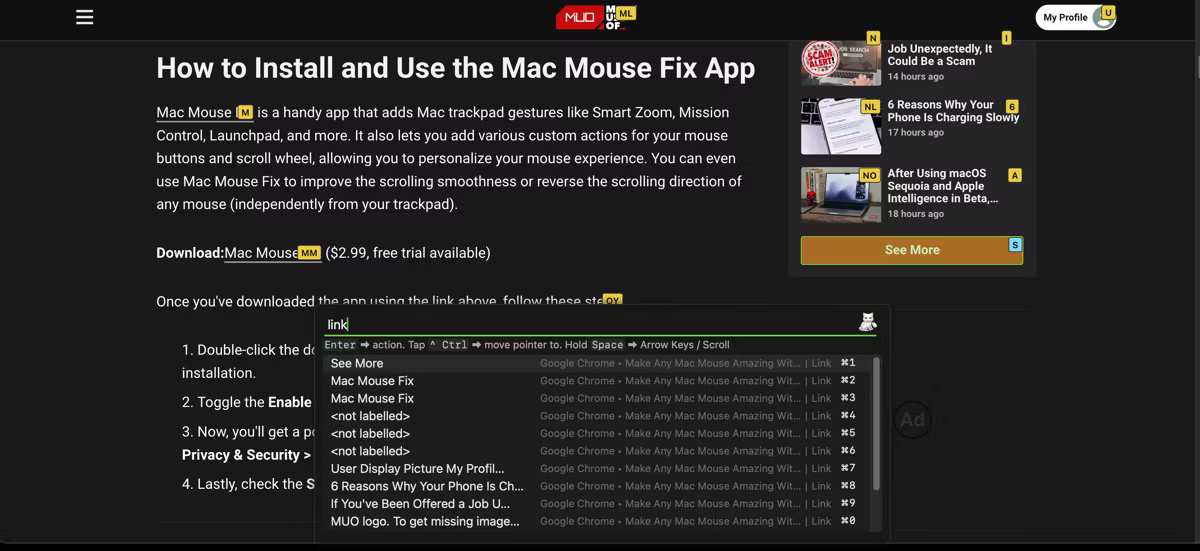
Select commonly used elements using Cmd + Number
Shortcat allows you to use the Cmd + Num keyboard shortcut to select from frequently used elements in a list with minimal effort. Hold Cmd and press the corresponding number key to select the element.
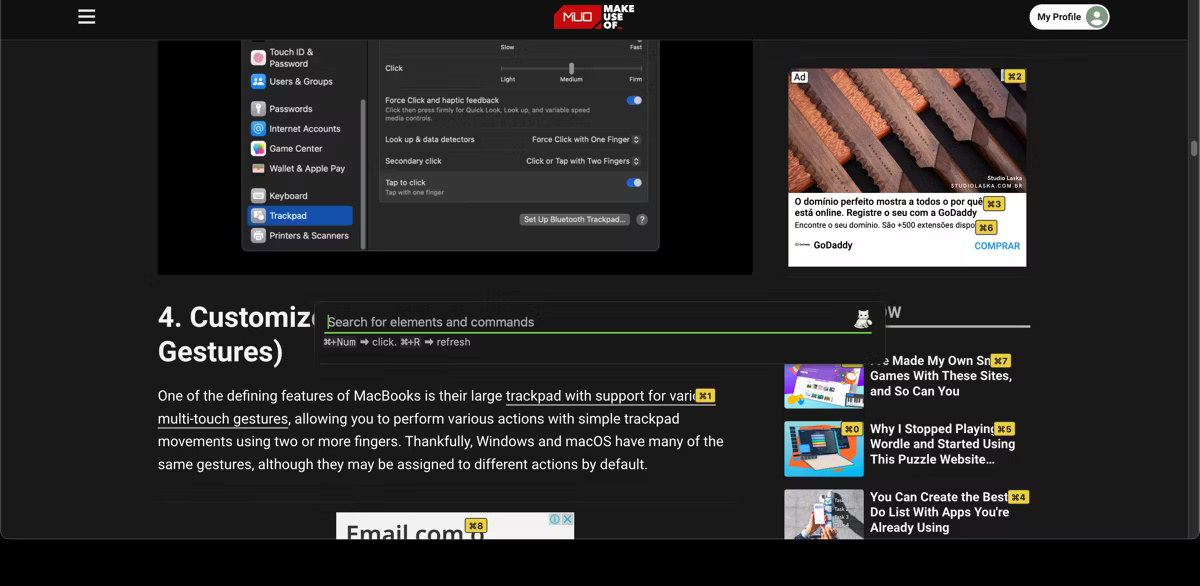
Use Shortcat to simulate many mouse actions
In addition to selecting UI elements on the screen, Shortcat also allows you to simulate many mouse actions such as clicking and scrolling with the keyboard. Here's a breakdown of the main mouse actions you can perform with Shortcat:
Left, right and double click actions with Shortcat
After selecting a clickable element, as described above, press Return (or Enter ) to perform a left-click. To simulate a double click, press Return twice. For example, to open a file on a Mac, you would select the file and press Return twice. Finally, to simulate a right-click and open a context menu, just press Control + Return .
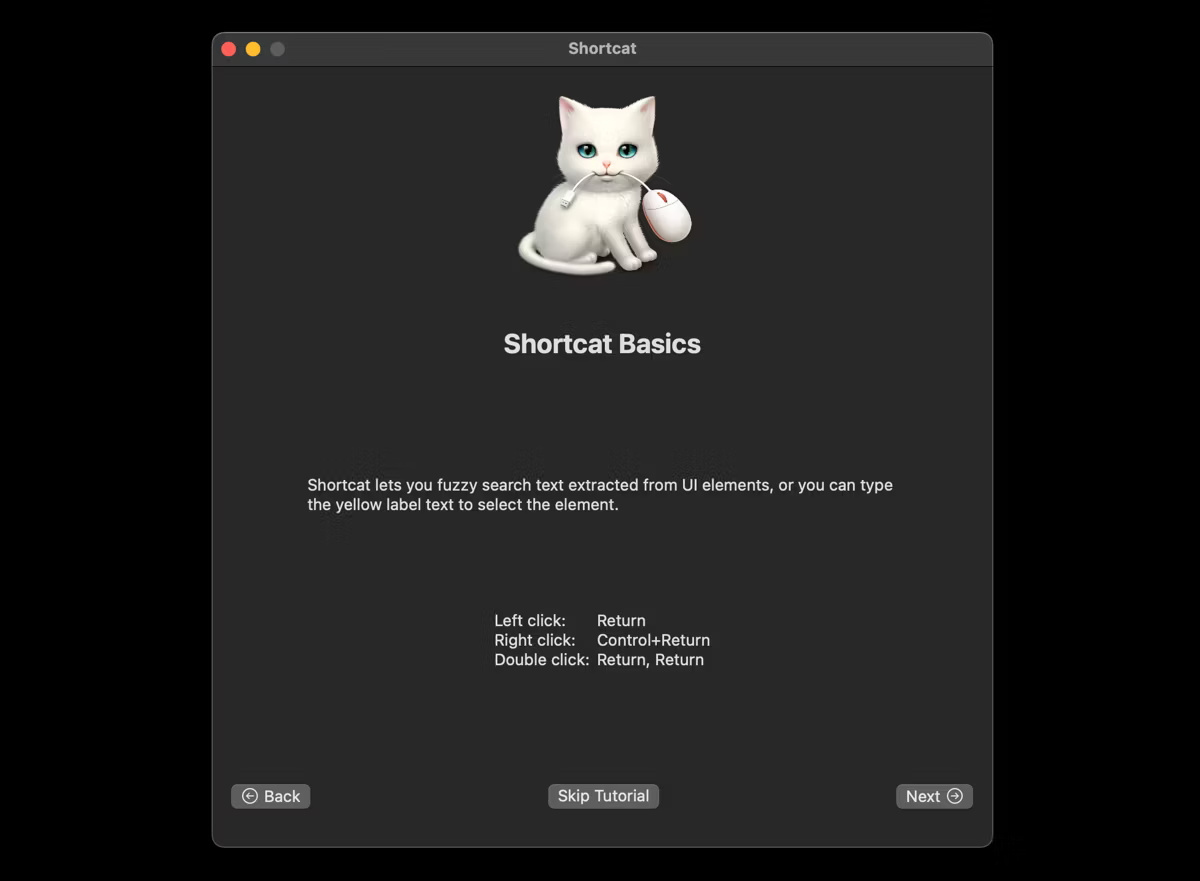
Click add-in using Shortcat
Shortcat also supports various modifier clicks, performed by holding down the modifier key and Return . For example, you can use Cmd + Return to open a link in a new tab or Shift + Return to select multiple items on the screen.
How to scroll with Shortcat
Shortcat allows you to scroll through on-screen content using just the keyboard. Hold Space + Cmd and I, J, K or L to scroll up, left, down or right respectively. For example, to scroll down, just hold Space + Cmd and press K repeatedly until the desired section shows up.
Additionally, Shortcat allows you to use keyboard shortcuts to navigate active windows just like using arrow keys (because arrow keys are used to navigate clickable UI elements when Shortcat is active). dynamic). Hold down the spacebar and press I, J, K, or L to simulate arrow key functions in an active window.
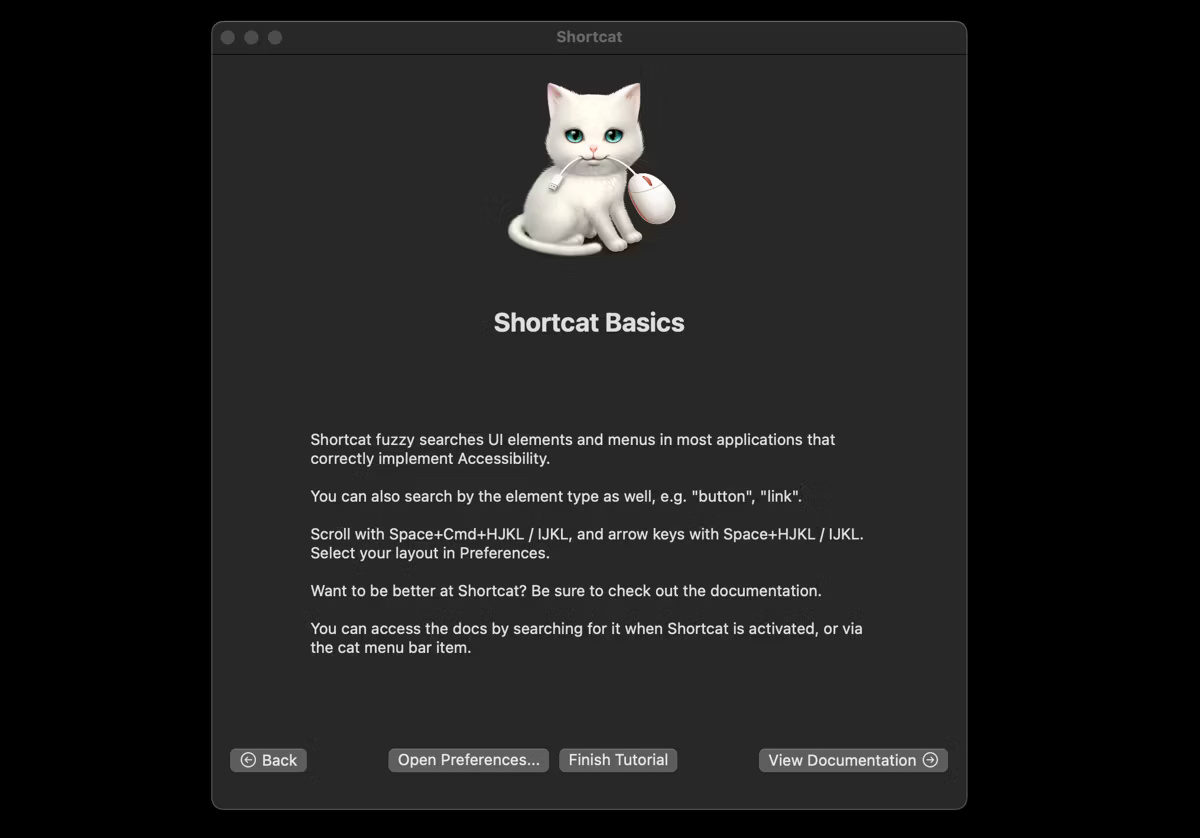
You should read it
- Instructions on how to make lucky bracelets give Christmas gifts
- How to download Youtube videos offline, watch Youtube videos offline
- 3 extremely attractive search and face recognition tools
- Opponent of Asus computer
- Operating Rename in Git
- How to fix 'The disk selected has an MBR partition table' when installing Windows
- Some Macs cannot install the Windows 10 update May 2019 Update
- How to remove spaces between words in Word
May be interested
- Top 7 best vertical mouse models worth owning in 2024
 vertical mouse or ergonomic mouse is probably a relatively new device to many people...
vertical mouse or ergonomic mouse is probably a relatively new device to many people... - What is the DPI of the mouse?
 what is the dpi of the mouse ?. one of the most important criteria for choosing a gaming mouse is dpi. maybe you've heard a lot of people say phrases like dpi 800, dpi 1600, ... but specific dpi is not everyone knows. to better understand the dpi of a computer mouse, please refer to the following article.
what is the dpi of the mouse ?. one of the most important criteria for choosing a gaming mouse is dpi. maybe you've heard a lot of people say phrases like dpi 800, dpi 1600, ... but specific dpi is not everyone knows. to better understand the dpi of a computer mouse, please refer to the following article. - 10 other tips to fix mouse not working error on Mac
 are you having trouble getting your mouse to work correctly on your mac? whether you use apple's magic mouse or a third-party bluetooth, wireless, or wired mouse, you can follow these tips to get your device working again.
are you having trouble getting your mouse to work correctly on your mac? whether you use apple's magic mouse or a third-party bluetooth, wireless, or wired mouse, you can follow these tips to get your device working again. - How to make your Mac mouse great with Mac Mouse Fix
 if you don't want to use the built-in trackpad or spend money on apple's pricey magic mouse, the mac mouse fix app can improve your experience with third-party mice on macos.
if you don't want to use the built-in trackpad or spend money on apple's pricey magic mouse, the mac mouse fix app can improve your experience with third-party mice on macos. - Instructions to change the interface of the mouse cursor on Windows
 besides changing the appearance of the desktop screen, another way to refresh your computer is to change the interface of the mouse pointer. there are quite a lot of tools to support this change, but in this article, we will introduce you to a simple, easy to use tool that is completely free, which is cursor commander.
besides changing the appearance of the desktop screen, another way to refresh your computer is to change the interface of the mouse pointer. there are quite a lot of tools to support this change, but in this article, we will introduce you to a simple, easy to use tool that is completely free, which is cursor commander. - How to connect a wireless mouse to a computer
 connecting a wireless mouse to a mac or windows computer is easy thanks to bluetooth technology.
connecting a wireless mouse to a mac or windows computer is easy thanks to bluetooth technology. - How to change mouse settings in Windows
 if you are bored with the default mouse image on windows, want to change its speed and settings, see the following article to bring a new look to your windows mouse .
if you are bored with the default mouse image on windows, want to change its speed and settings, see the following article to bring a new look to your windows mouse . - Differentiate optical mice and laser mice
 today, mice are one of the most popular and indispensable devices for people who regularly use computers, but not everyone distinguishes the differences between them.
today, mice are one of the most popular and indispensable devices for people who regularly use computers, but not everyone distinguishes the differences between them. - The birth of computer mice and familiar clicks
 in december 1968, a little-known scientist from the stanford research institute made the conference participants in san francisco quiet. there, he talked about conversation and something called a rat.
in december 1968, a little-known scientist from the stanford research institute made the conference participants in san francisco quiet. there, he talked about conversation and something called a rat. - How to switch left to right mouse on Windows 11
 many left-handed users complain that they have difficulty interacting with their computers. i will guide you how to switch left to right mouse on windows 11...
many left-handed users complain that they have difficulty interacting with their computers. i will guide you how to switch left to right mouse on windows 11...










 How to watch Apple's iPhone 16 'It's Glowtime' event
How to watch Apple's iPhone 16 'It's Glowtime' event Zhueque, Xiaomi's keyless phone
Zhueque, Xiaomi's keyless phone How to block others from adding you to a Telegram group
How to block others from adding you to a Telegram group Call of Duty prevents hacking by making real gamers invisible
Call of Duty prevents hacking by making real gamers invisible Telegram said the CEO has 'nothing to hide' after being arrested in France
Telegram said the CEO has 'nothing to hide' after being arrested in France 6 things that are gradually 'killing' your computer
6 things that are gradually 'killing' your computer